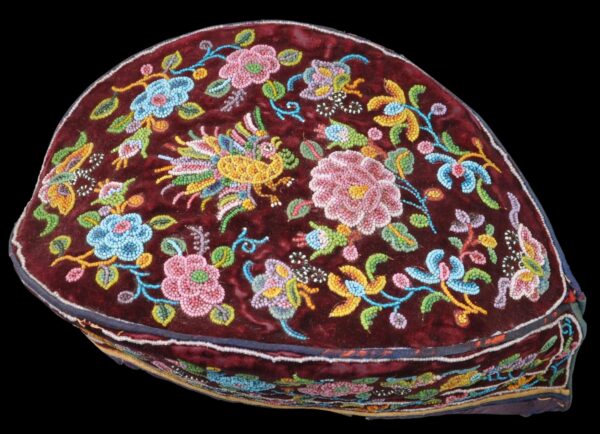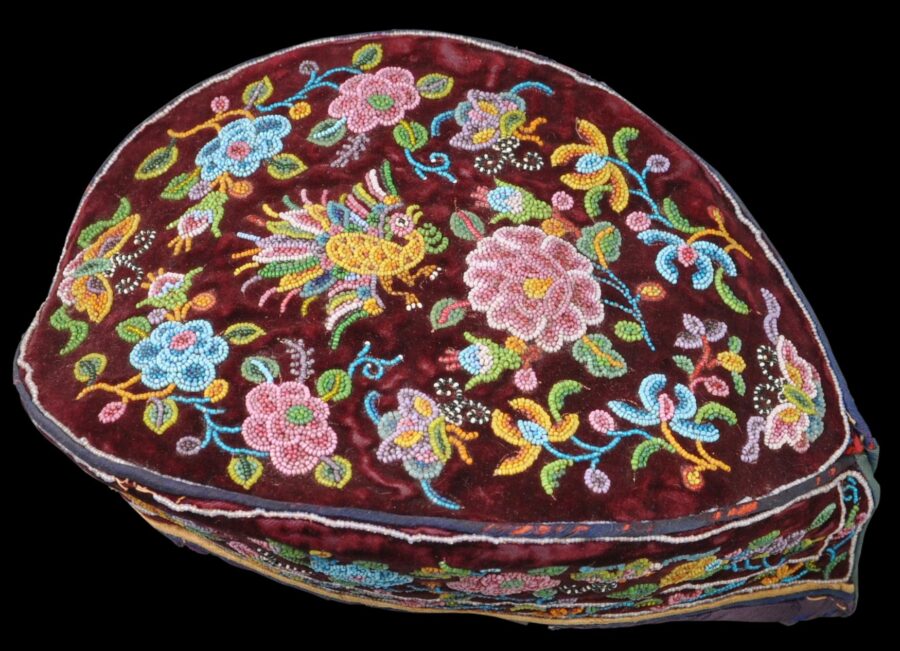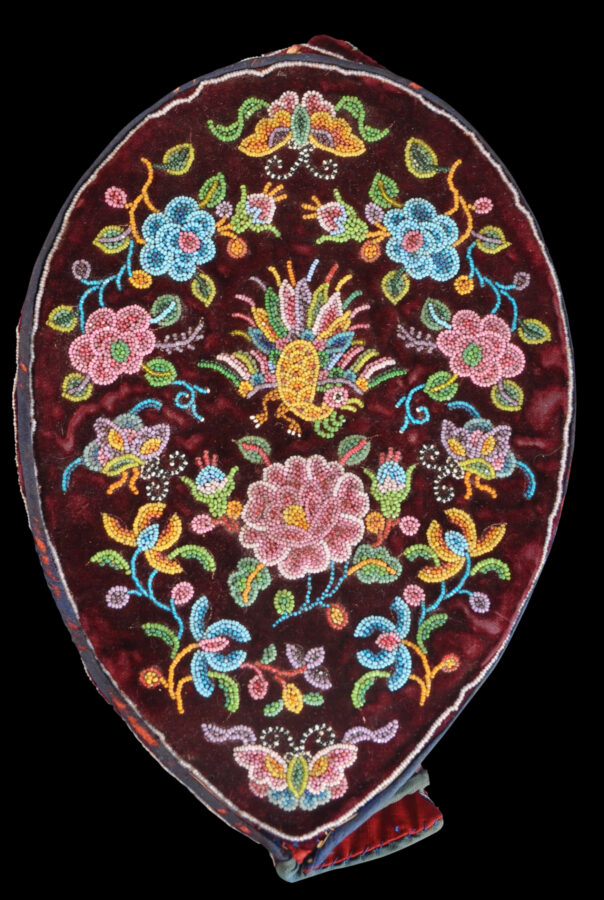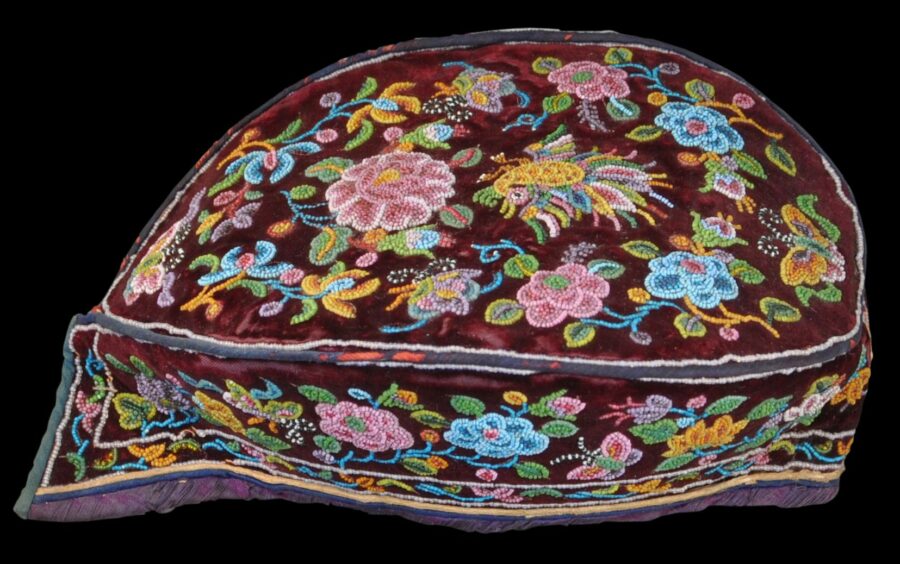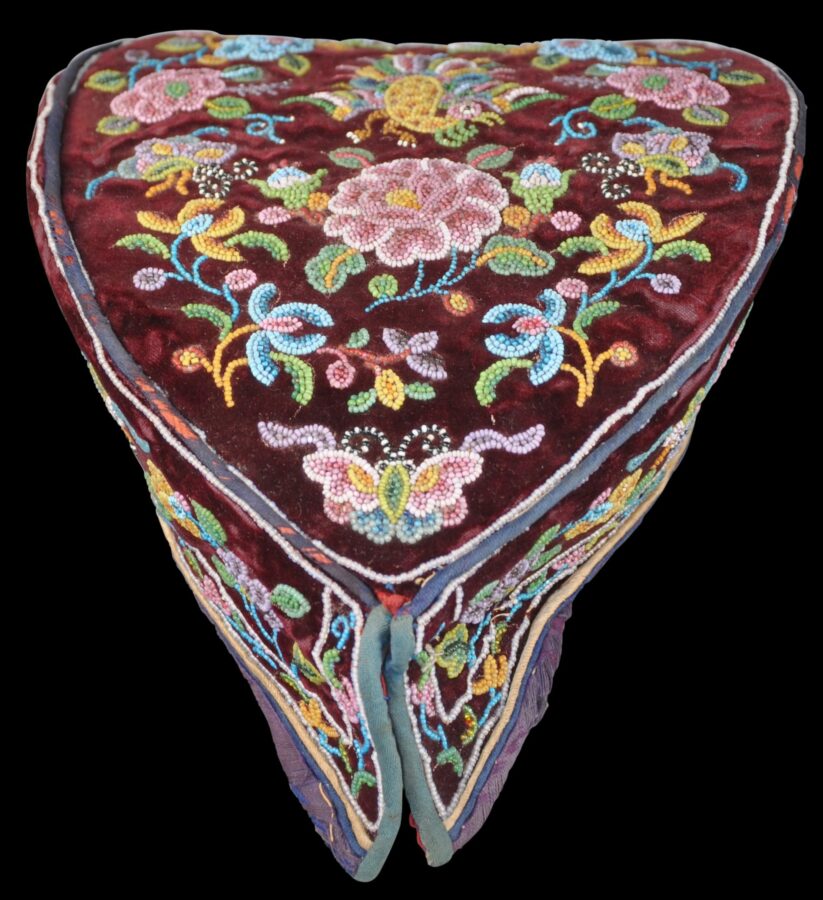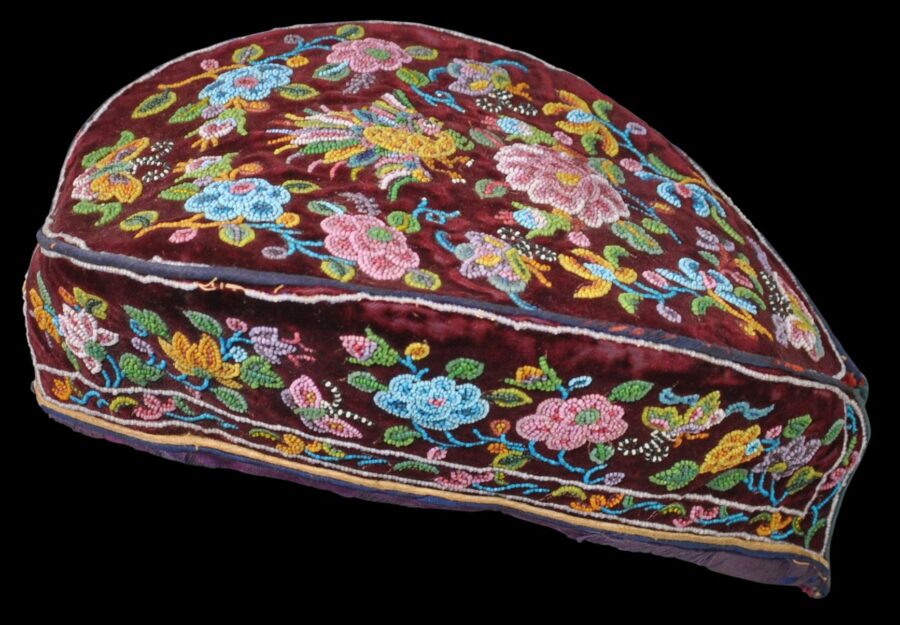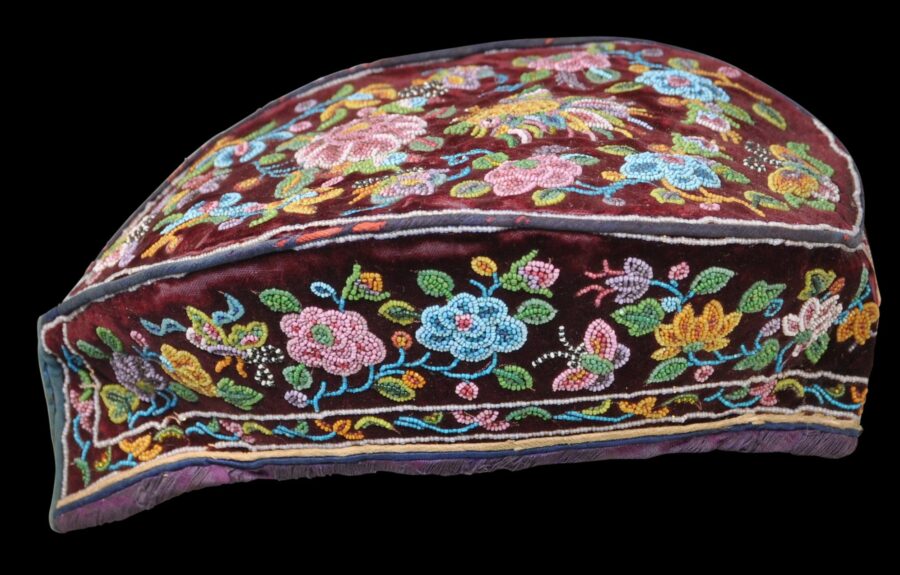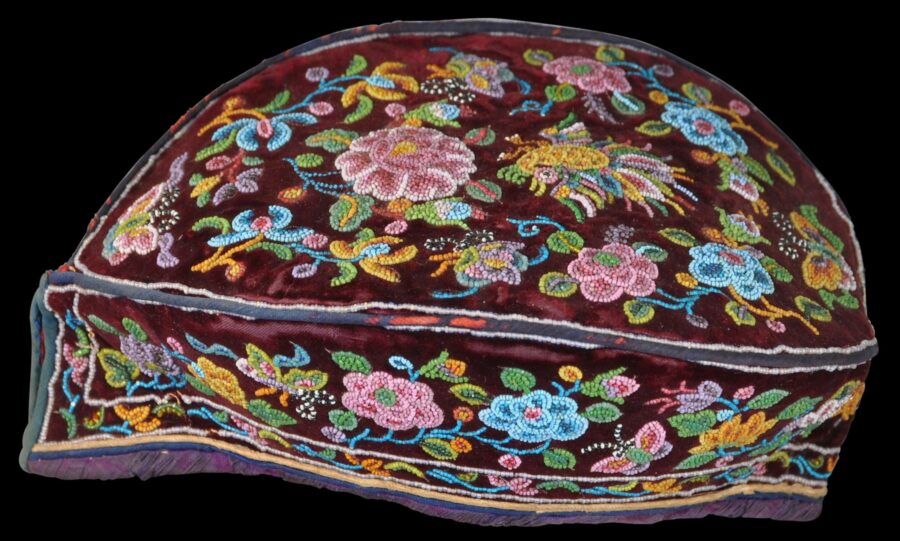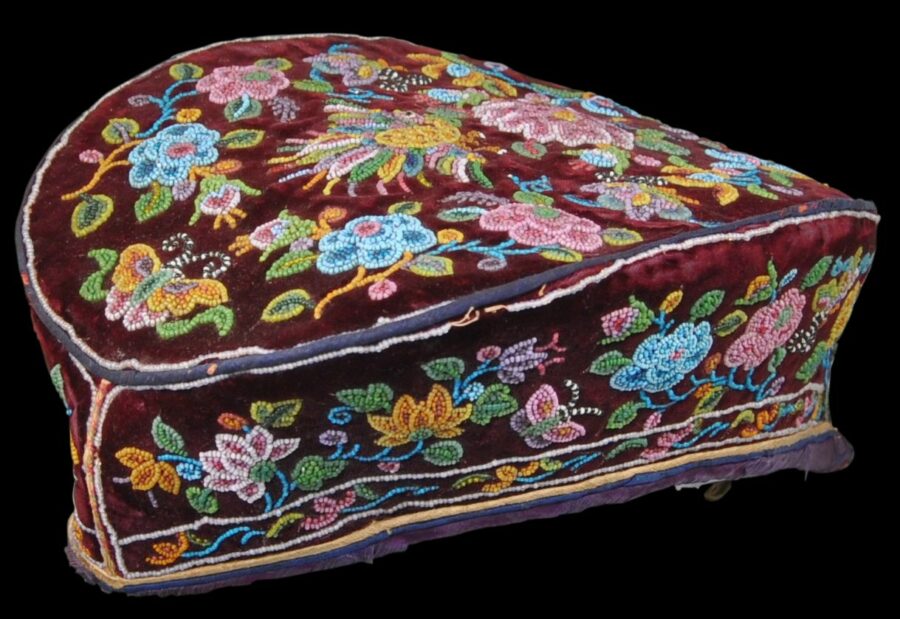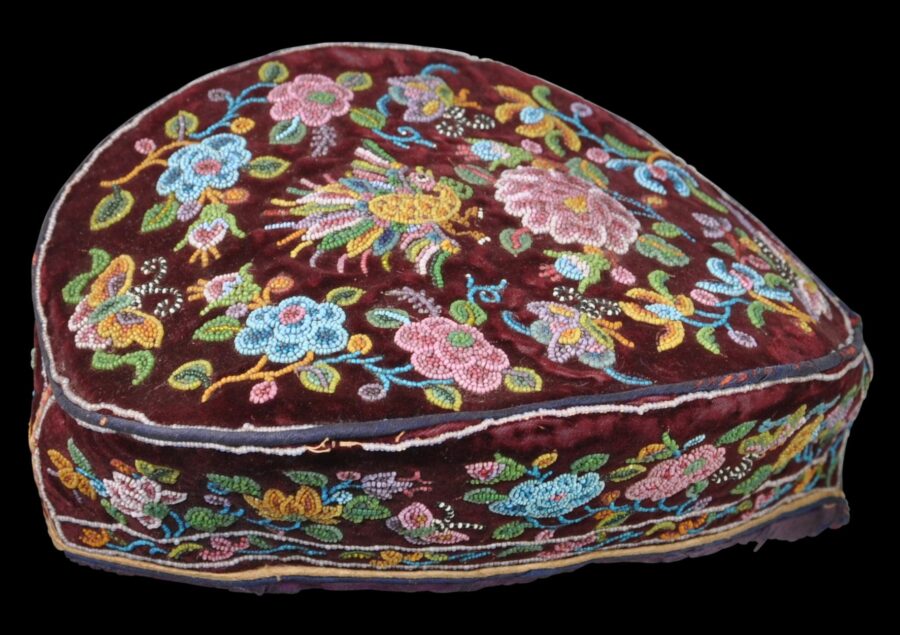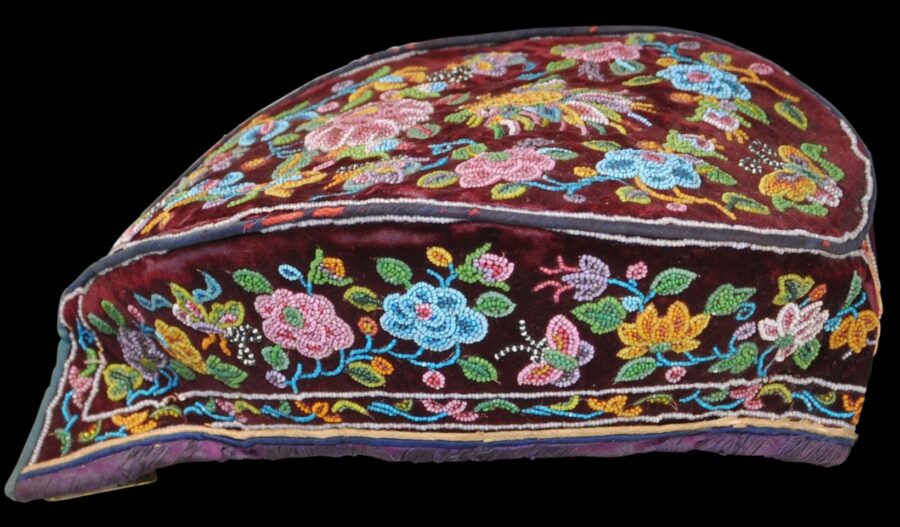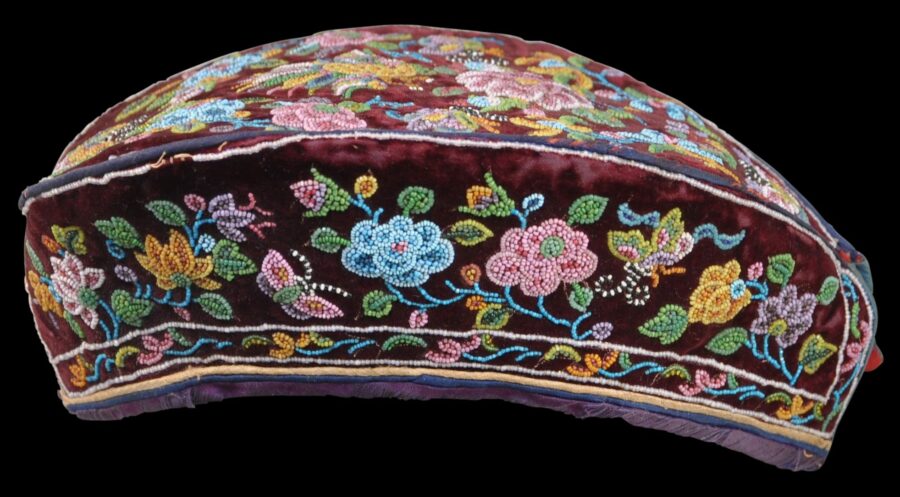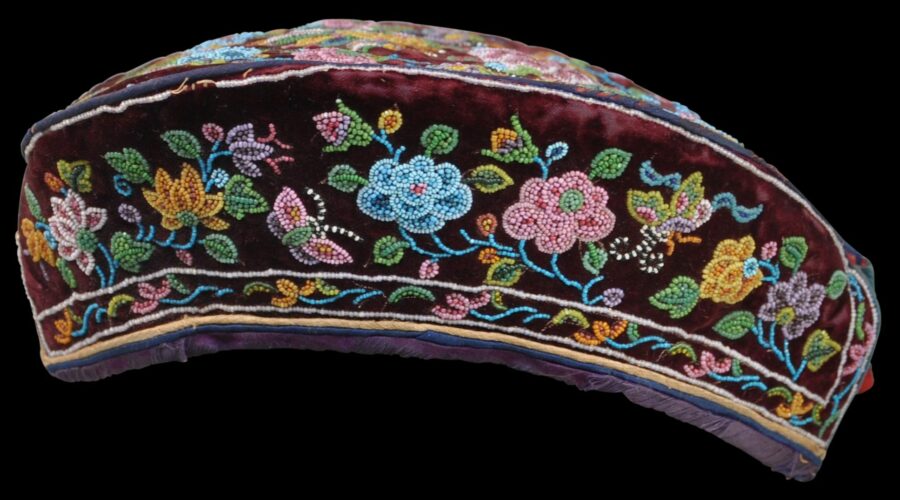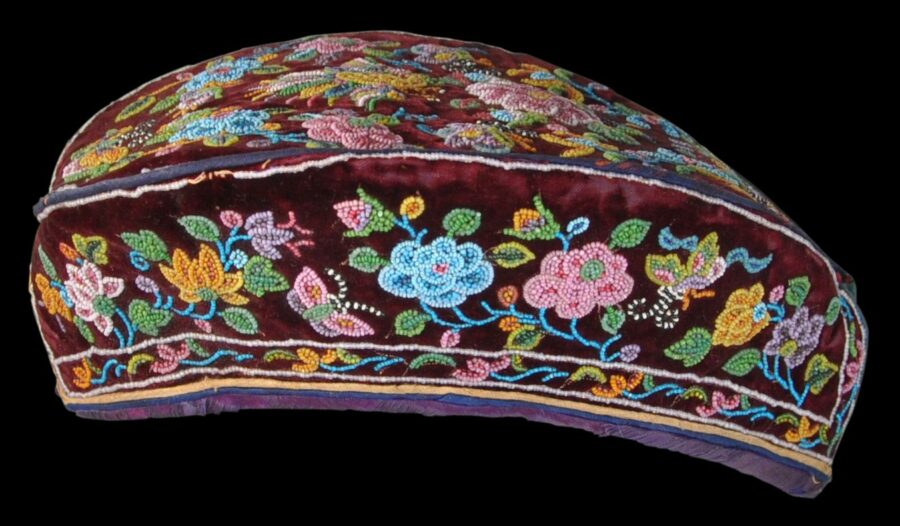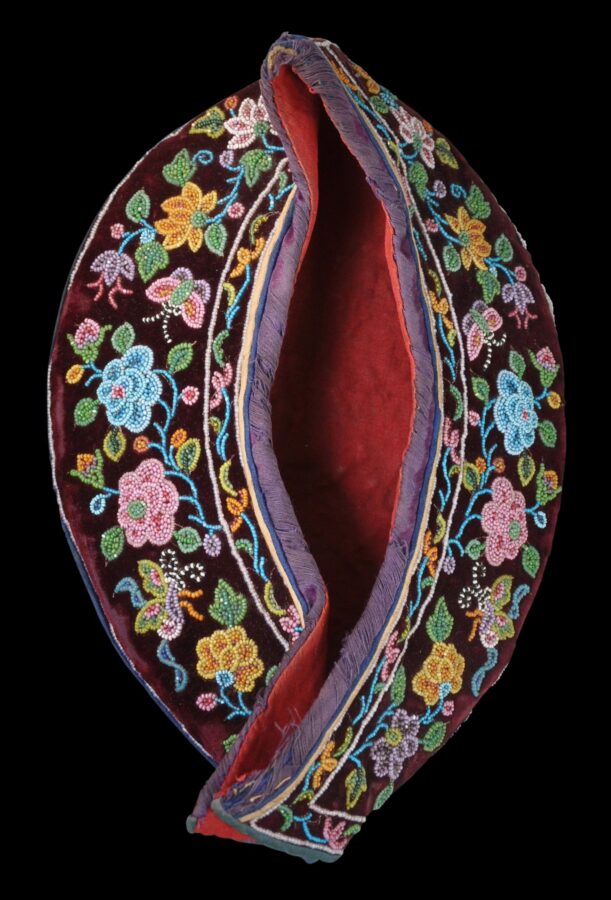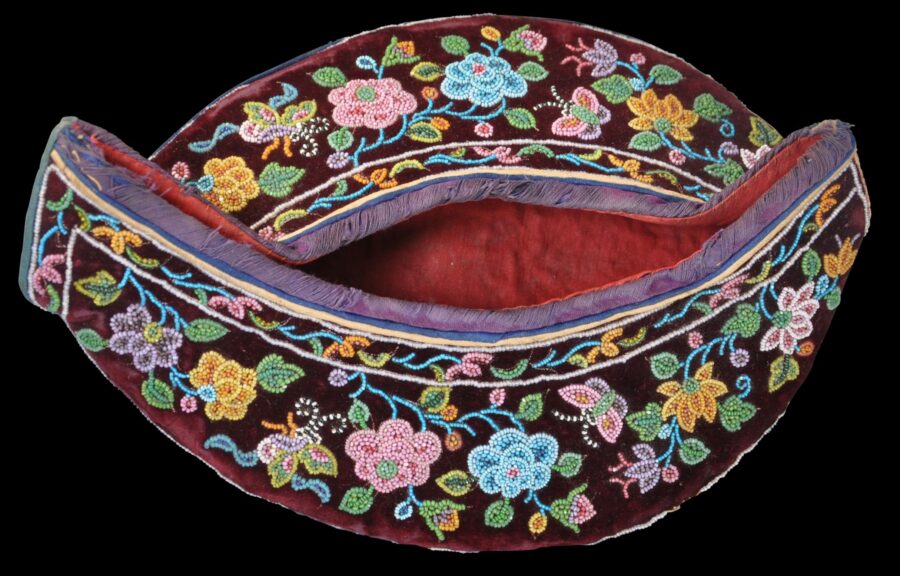This cap, of purple velvet and beautifully decorated on the top and sides with rocaille beadwork, is from the Straits Chinese community, most probably of Singapore or Malacca.
It is in the form of a songkok, the hat worn my (Muslim) Malay men and boys. As such, it is the only example of a songkok-style hat with Straits Chinese embroidery of which we are aware. Such a form might be expected. The Straits Chinese were the descendants of immigrants from mainland China who had settled in the Straits Settlements of Malacca, Penang and Singapore, and who, over many generations, adopted cultural habits from the local Malay people, which, when mixed with their own, created an unusual hybrid culture.
The cap is longer than it is wide, as is the case with a Malay songkok.
There is a flap at the back of the cap to allow it to be fitted over the head more easily.
Most probably, it was intended to be worn by a page boy as part of his wedding costume. The beadwork motifs include phoenixes, butterflies and peonies – all symbols typically used by the Straits Chinese on paraphernalia used at their long and lavish wedding celebrations to denote conjugal happiness and prosperity for the marrying couple.
Rocaille beads were made in southern France and were widely used in Singapore and the other Straits Settlements for beading slippers, wedding pillow ends, betel set mats and other paraphernalia associated with baba/nonya culture. The Straits Chinese referred to the beads as manek potong (‘cut beads’) and acquired them from street peddlers and specialist merchants for the purpose of beading and embroidery.
The cap is in excellent condition – there is minor fraying to the edges but importantly there are no losses to the beadwork.
The cap was in the collection of Evelyn Haertig, a US-based author, researcher and collector. She was the author of several books, the highly regarded Antique Combs and Purses (1983) and More Beautiful Purses (1990), and she developed an extensive collection of beadwork and purses from around the world. It is possible that she acquired the cap in the UK on one of her visits there.
As mentioned, this is the only example of a songkok-style Straits Chinese cap of which we are aware – and yet it perfectly represents the blended culture of the Straits or peranakan Chinese – with its Malay form but with obviously Chinese decoration.
References
Cheah, H.F, Nyonya Needlework: Embroidery and Beadwork in the Peranakan World, Asian Civilisations Museum, 2017.
Ee, R., et al, Peranakan Museum A-Z Guide, Asian Civilisations Museum, 2008.
Ho, W.M., Straits Chinese Beadwork & Embroidery: A Collector’s Guide, Times Books International, 1987.


